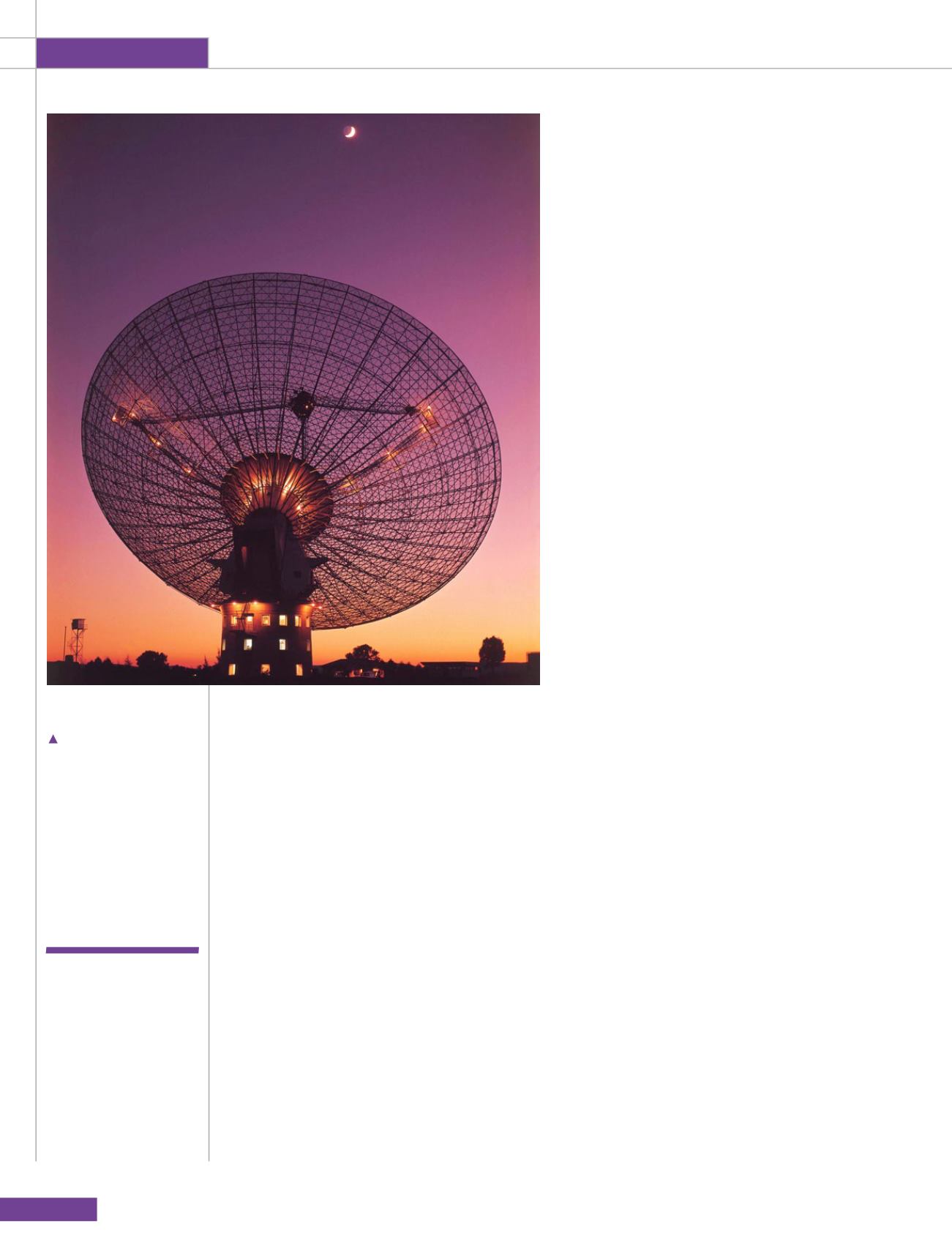
ROOM
100
Space Lounge
Mars Yard, a large, high fidelity recreation of
the Martian surface.
Some Australian artefacts from the museum’s
space technology collection can also be seen at the
Museums Discovery Centre, a display storage facility
used by Sydney’s major museums and situated at
Castle Hill in western Sydney.
Also worth visiting for those with an interest in
the history of Australian astronomy is the Sydney
Observatory, the oldest surviving observatory in the
country. Located right beside the Sydney Harbour
Bridge, the observatory presents exhibitions about
the history of astronomy in Australia and is also open
for night time stargazing, using both its heritage 29
cm refractor telescope (the oldest working telescope
in Australia) and a state-of-the-art 40 cm reflector.
The Powerhouse, the Museums Discovery
Centre and Sydney Observatory, are all part of the
Museum of Applied Arts and Sciences and further
information about each venue can be found at
/
Parkes, New South Wales
One of the world’s great radio astronomy instruments,
the Parkes Radio Telescope has also played a
significant role in space exploration. In addition to
being the technological prototype for the 64 m dishes
of NASA’s Deep Space Network, Parkes has played
a vital role in various NASA and ESA deep space
missions and also in the Apollo lunar programme.
Australian film The Dish was based upon its role
in bringing the Apollo 11 moonwalk broadcast to
the world, and Parkes also played a critical role in
the rescue of the Apollo 13 crew. While the radio
telescope itself is not generally accessible to the
public, except on special open days (check the
website closer to time to see if one will be occurring
during any planned visit), it operates an excellent
visitors’ centre with displays on astronomy and space
science, a 3D theatre and an award-wining café.
Some 370 km west of Sydney, Parkes is best
visited by road (about a six-hour drive from Sydney),
although air/bus and train/bus travel options are
possible. The lovely regional centre of Parkes, and its
nearby heritage town of Forbes, are recommended
as locations to spend a few extra days sightseeing.
Information on the Parkes facility’s opening hours
and how to get there can be found at:
.
au/en/Research/Facilities/ATNF/Parkes-radio-
telescope/Parkes-Observatory-Visitors-Centre/
Hours-location
Canberra, Australian Capital Territory
Australia’s national capital region was the home of
NASA’s second generation of tracking stations in
it will be school holiday time when the congress
takes place, advance bookings are recommended
at Woomera, as it is a popular stopover for people
travelling to and from the Northern Territory.
Sydney, New South Wales
Visitors to Sydney should not miss the Space
exhibition at the Powerhouse Museum, situated
in the heart of the city at Darling Harbour.
Australia’s largest space history and technology
exhibition, it places Australian space activities in
their global context. Its exhibits include an Apollo
16 Moon rock and the unique Zero G Space Lab,
an interactive exhibit that uses special effects to
trick the mind and create the illusion of being in a
microgravity environment.
The Powerhouse is also home to the Mars
Lab, an innovative education programme that
brings together high school education and
university research around the development of
robotic roving vehicles and the search for life
on Mars. As part of this, students from across
Australia and around the world can remotely
operate research-grade robot rovers in the
CSIRO/ATNF
Woomera
Rocket Range
was also the
hub of space
activities in
Australia from
the 1950s to
1980
A view of the Parkes
Radio Telescope in 1969,
during its involvement
with the the Apollo 11
mission.


